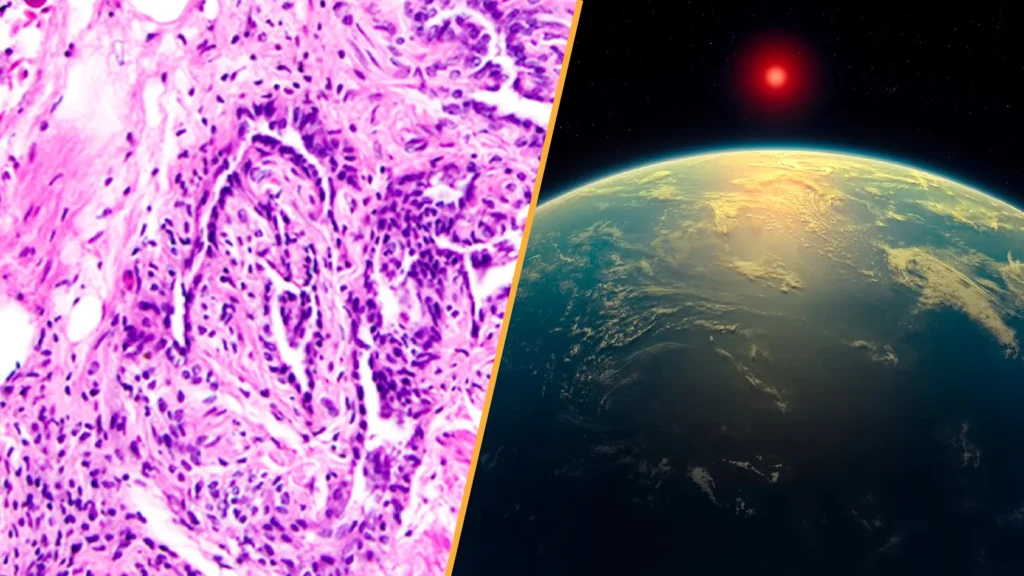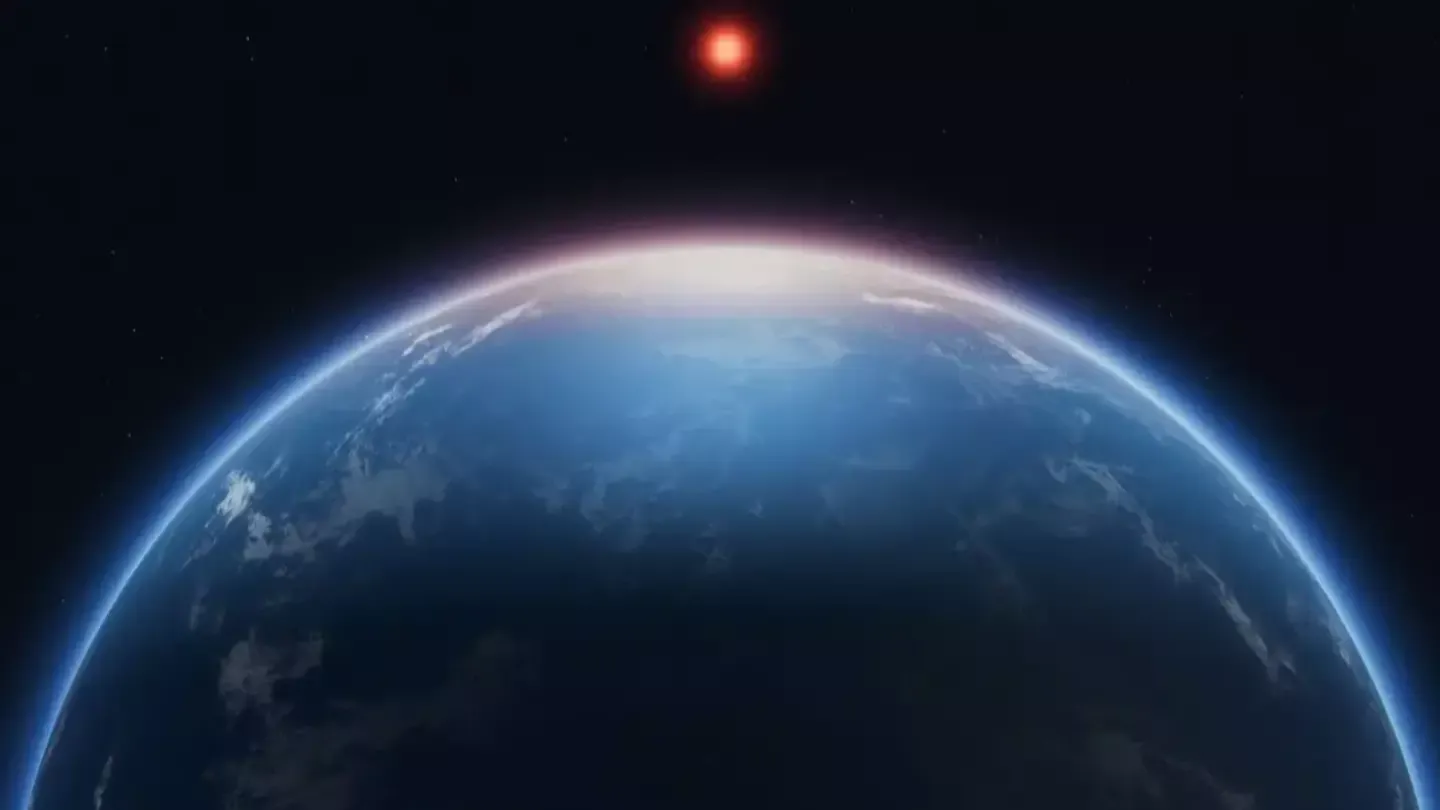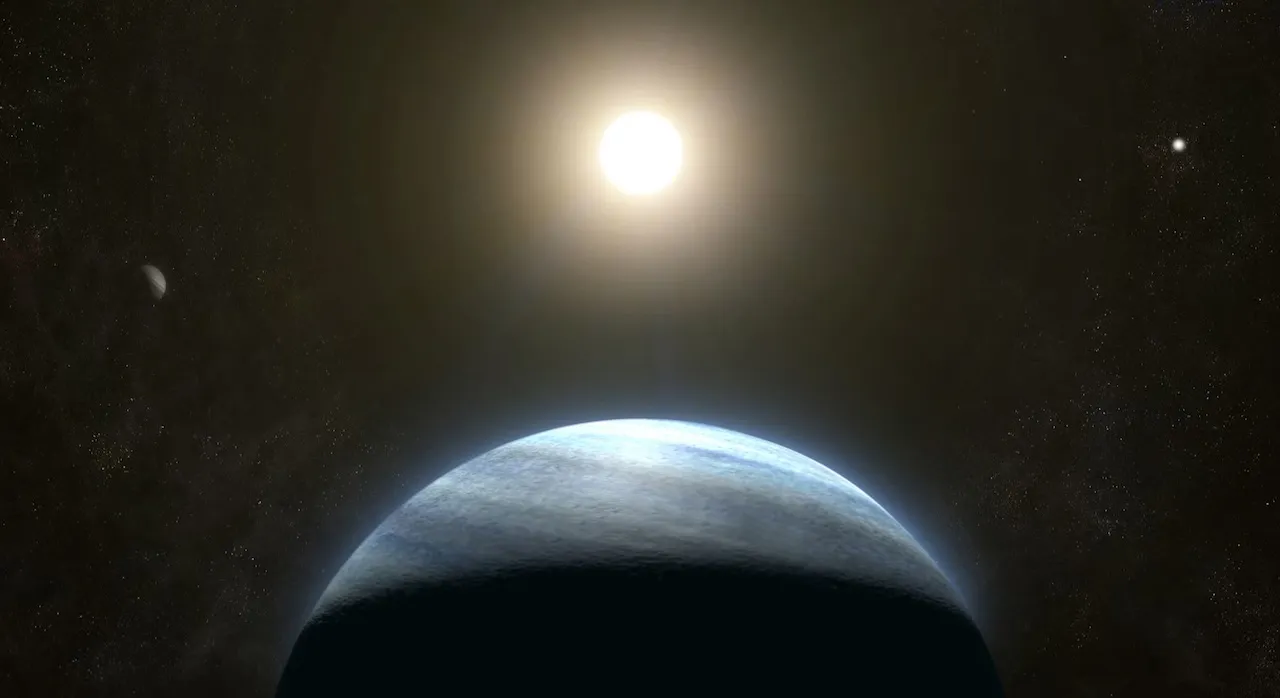
On April 16, 2025, astronomers announced an intriguing finding that has sent shockwaves through the scientific community. After analyzing the atmosphere of the distant planet K2-18b, a team of astronomers led by University of Cambridge’s Nikku Madhusudhan revealed they had detected the presence of a gas called dimethyl sulfide (DMS) in its atmosphere. While this discovery does not confirm the existence of life on this planet, it has certainly opened the door to exciting possibilities.

K2-18b, located 120 light-years away from Earth, is a mysterious world with an atmosphere that has caught the attention of scientists for more than just its distant location. The discovery of DMS, a gas that, on Earth, is primarily produced by marine life, has raised eyebrows. Could this be a sign that life, or at least biological processes, might be occurring on this far-off world?
K2-18b: An Alien World With Uncharted Mysteries
K2-18b is part of a planetary system discovered by the extended NASA Kepler mission, K2. With a mass eight times that of Earth and a volume 18 times larger, K2-18b is unlike anything we know in our solar system. Scientists speculate that it could either be a “mini-Neptune,” a smaller version of our solar system’s ice giant, or a “gas dwarf,” a planet with a massive hydrogen atmosphere and no water. However, one of the most intriguing hypotheses is that K2-18b could be a “hycean world,” a planet with vast oceans covered by thick hydrogen atmospheres.
This “hycean” model is based on the idea that K2-18b could harbor global oceans that are far deeper than Earth’s, potentially creating conditions that could support life. With no continents to complicate things, these oceans might be temperate enough for life to thrive. But, of course, this is still just a hypothesis.
Dimethyl Sulfide: A Clue That Could Point to Life?
In 2023, Madhusudhan and his team first used the James Webb Space Telescope (JWST) to study the atmosphere of K2-18b. The data they collected revealed some interesting results, including two carbon-bearing molecules—carbon monoxide and methane—along with an absence of water vapor in the upper atmosphere. These findings were consistent with the hycean hypothesis but didn’t confirm it outright.
However, it was the unexpected detection of dimethyl sulfide (DMS) that truly sparked excitement. On Earth, DMS is predominantly produced by marine algae, and its presence in the atmosphere of K2-18b was a puzzling and intriguing anomaly. Could it be that biological processes are at play on this distant planet?
A Year Later: More Evidence, but Still Uncertainty
To validate the initial findings, Madhusudhan’s team returned to K2-18b in April 2025, using a different camera on JWST to examine the planet’s atmosphere across a broader range of wavelengths. This second round of observations strengthened the case for the presence of DMS, as the signal became clearer, though still relatively weak.
While the team was careful to address uncertainties in their data, they found that the probability of the signal originating from DMS was too high to be dismissed. As Madhusudhan notes, these findings represent an exciting step forward in our understanding of potentially habitable exoplanets, but they also highlight the need for further research to rule out other explanations.
The Skepticism: Why Are Some Scientists Cautious?

Despite the excitement surrounding the discovery, many astronomers remain skeptical. For one, the signal detected in the JWST data is still weak, and the presence of DMS in the atmosphere of K2-18b is not yet conclusive. Additionally, the question of whether K2-18b actually has the deep oceans necessary for a hycean world remains unanswered.
There is also the matter of whether DMS truly indicates biological activity. While the gas is indeed associated with life on Earth, there could be nonbiological processes that produce similar molecules. For now, scientists must exercise caution and gather more data to confirm or refute these initial findings.
The next steps in this cosmic investigation are clear: astronomers will need to conduct more detailed studies of K2-18b’s atmosphere and gather additional observations from the JWST. It will take time, but with the telescope’s advanced capabilities, the possibility of discovering more potential signs of life across the universe remains tantalizing.
As Madhusudhan and his team continue their work, the search for alien life is far from over. Their findings could soon be tested on other potential hycean worlds to see if similar signals appear. If DMS is confirmed as a biosignature, it could revolutionize our understanding of life beyond Earth.
The Big Question: Is Life Out There?
For now, the answer is elusive. While the detection of DMS on K2-18b is fascinating, it does not confirm the existence of life on this distant planet. To make that leap, scientists will need more sensitive instruments and further observations. And even if DMS is definitively identified, proving that it is a result of biological activity will be a monumental challenge.
Yet, as astronomers like Madhusudhan continue to explore this uncharted frontier, the dream of finding life beyond Earth inches ever closer. The prospect of discovering alien ecosystems lurking in distant oceans, perhaps beneath thick atmospheres on planets like K2-18b, is a thrilling one, and it is sure to spark the imagination of both scientists and the public alike in the years to come.
K2-18b represents a new frontier in the search for life beyond our planet. While skepticism still surrounds the findings, the possibility that this distant world could harbor life is one of the most exciting developments in astrobiology in recent years. With the continued efforts of astronomers and the advanced technology of the JWST, the coming years promise to bring more discoveries that could shape our understanding of the universe and our place within it.
